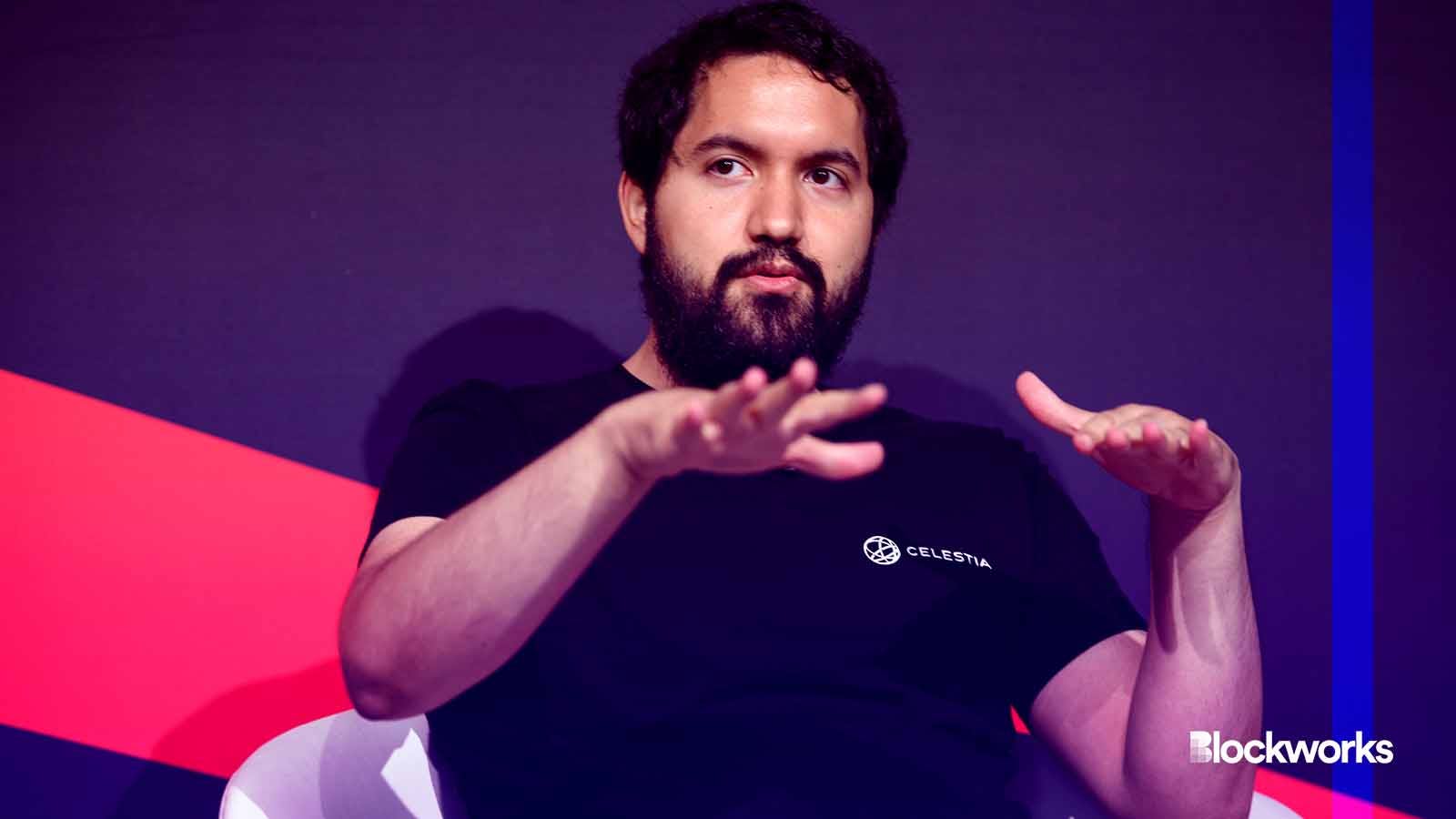For Ethereum rollups, dealing with data remains a bottleneck
Data availability solutions are launching, but Ethereum remains the most popular blockchain for developers to post data

Celestia co-founder John Adler | DAS 2022 New York by Blockworks
When it comes to scaling Ethereum, rollups are the name of the game. But as rollups increase transaction throughput, they face a challenge in where to store their data.
The obvious option is on Ethereum itself. Some argue that doing so is even core to the claim that rollups “inherit” Ethereum security. Ethereum’s execution layer nodes store a complete copy of the blockchains ledger and history, allowing clients to independently verify the accuracy of its transaction history.
While great for security and resilience, this comes at the cost of scalability. This is one of the main reasons why the Ethereum mainnet maxes out at around 15 transactions per second (TPS), and can be expensive during times of high demand.
Read more: So your layer-2 is ‘secured by Ethereum’ — what does that mean?
Increasingly, blockchain developers are looking at alternatives for “data availability” to resolve Ethereum’s shortcomings. Some developers are turning towards modular blockchain solutions such as Celestia and Avail.
Modular blockchains often refer to networks that disaggregate specific blockchain functionalities. Dedicated data availability layers are designed to increase the efficiency of a blockchain, improve its transaction speeds and minimize costs.
Read More: Why data availability sampling matters for blockchain scaling
Celestia was one of the first data availability layers to launch its mainnet beta. Since October, it has seen over 900,000 transactions and around 278,000 accounts on its network, according to Celenium, Celestia’s block explorer. The explorer does not break down the network’s data volume or number of submissions.
The network has also been working on integrations with other layer-2 solutions, most recently with the Polygon CDK, enabling interested developers to choose Celestia for data availability alongside other options.
For developers using Optimism’s OP Stack, Celestia also introduced Ethereum fallbacks — a backup solution for data availability. That means that if the Celestia network is temporarily unavailable, layer-2s can post their transaction batches back onto Ethereum mainnet. This avoids the risk that end-user funds remain stranded.
Avail recently launched its testnet, dubbed “Clash of Nodes,” which uses gamification to incentivize validators and light client operators with points and rewards, Anurag Arjun, Avail’s co-founder, told Blockworks.
According to Avail’s blockchain explorer, there are 56,000 accounts on its testnet, which has processed over 1.2 million transactions since it began. Its mainnet is expected to launch in the first half of 2024.
The two networks serve a similar purpose, but there are some key differences.
For one, Arjun notes that Avail uses KZG polynomial commitments — a type of validity proof used to sample random parts of a block to verify it, without needing to access the full data.
These KZG commitments “are ideal for zero-knowledge-based blockchains, where efficiency, privacy and scalability are essential,” Arjun said.
Celestia instead uses secure hash functions, which Arjun notes “introduces potential delays in ensuring data availability guarantees.”
“The tradeoff here is that they have to rely on fraud proofs to confirm the accuracy of erasure coding,” Arjun said.
The choice between these two depends on the specific requirements and priorities of a blockchain system.
Read more: Sovereign rollups carve a path for blockchain scaling
Aside from Celestia and Avail, re-staking protocol EigenLayer has also recently revealed its plans to launch EigenDA.
Ethereum core developers are also not standing still; the core piece of Ethereum’s next major upgrade Dencun will introduce “proto-danksharding,” or EIP-4844, a process where costs of transactions are reduced by storing them in temporary data blobs.
Data availability and storage remains a significant cost driver on Ethereum. Solutions under development are still in their early stages. While its roadmap calls for an eventual transition to “stateless” Ethereum, the current data bloat puts the full Ethereum chain at nearly 1.4 terabytes.
Get the news in your inbox. Explore Blockworks newsletters:
- The Breakdown: Decoding crypto and the markets. Daily.
- 0xResearch: Alpha in your inbox. Think like an analyst.






